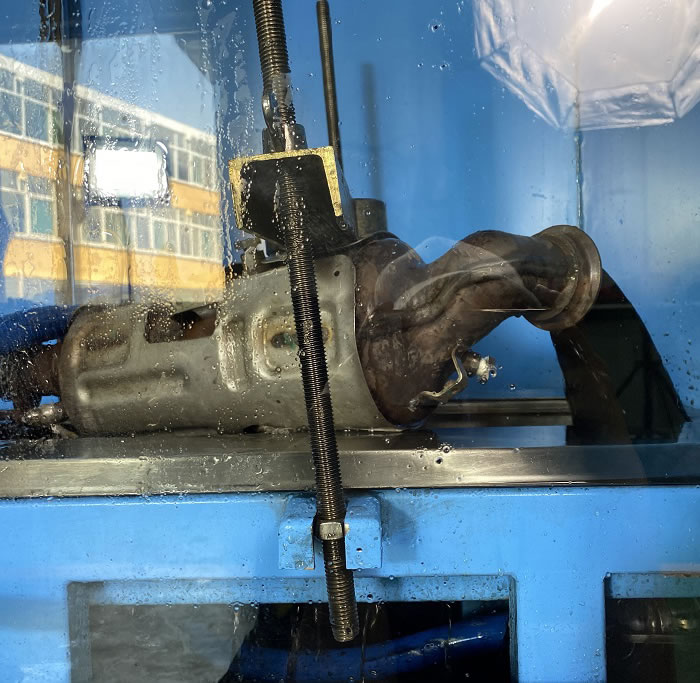Cleaning methods DPF/FAP/CAT:
An effective method of cleaning filters must clean the filter channels, microporous walls separating the filter channels and the inside of the steel housing from soot, ashes, carbon deposits, and cerium oxide particles, and at the same time be safe for the filter core to insert itself.
1. Hydrodynamic cleaning.
The cleaning method uses a specialized machine that produces a working stream of liquid directed directly into the filter interior. Required uses of a cleaning agent – detergent.


Advantages
- Safe for the catalytic coating of the filter. High efficiency, Almost 100%.
- As a few, it has the ability to effectively clean the filter channels from
- all solid particles: soot, ashes, carbon deposit, and cerium oxide.
- No need to cut out the steel housing.
- Fast cleaning time about 60 mins.
Disadvantages
Effectiveness depends on a well-chosen detergent, cleaning program, machine quality, and the machine manufacturer’s experience. Easy to damage the precious metal coating in the honeycomb structure
2. Thermal treatment
Soot burning in an induction furnace. Placing the ceramic core filter core in the oven for about 12 hours.
Advantages
Effectively removes (burns) soot.
Disadvantages
Does not remove remaining solid particles, e.g. ashes, which cannot be burned. High risk of damaging the ceramic filter cartridge, sensitive to too rapid changes in temperature.
They need to cut the filter, remove the cartridge, welding.
3. Ultrasonic processing
The method consists of the filter being completely submerged in a solution tub. Ultrasounds in the washing solution generate pressure waves in the form of imploding bubbles, which in turn detach dirt from the surface of the washed filters.
Advantages
It allows for good cleaning of the filter channels, as long as water reaches all places. No need to cut the filter.
Disadvantages
In the case of very blocked (baked) filter channels, ultrasonic water has limited access and penetration options. Leaving these places unaffected. Requires compressed air blowing.
4. Pneumatic technology.
The particulate filter is placed in a specialized machine, in which it is subjected to compressed air blowing.
Advantages
- Each filter channel is individually addressed during purge.
- Relatively low-invasive for the filter insert.
- Cleaning without the use of detergent.
Disadvantages
- Need to cut the filter, remove the cartridge, welding.
- Not effective for oil-filled filter element.
- Overall effectiveness at 70%.
5. Regeneration in the service mode.
The diagnostic computer activates the mode in which the engine is running at high speed.
A much richer fuel mixture increases the temperature of the exhaust gas to even 600 degrees! In such conditions it is possible to burn out soot.
Advantages
- Effectively burns soot in low mileage units up to 50,000 km.
- Procedure without removing the filter.
Disadvantages
- Does not remove ash. It only burns soot.
- Very inefficient for cars with high mileage, where the ash level
- Makes up the majority of the clogged filter.
- The regeneration service mode puts a heavy load on the engine (engine whining).
6. Chemical cleaning.
This operation involves introducing special chemicals into the filter to dissolve the soot. Chemical cleaning of carbon deposits with one preparation and subsequent rinsing with another. Then the car mechanic connects the service computer to the car and starts the filter regeneration service procedure.
Advantages
Does not require cutting the filter. Chemistry application without removing the filter.
Disadvantages
- Flushes only the smallest solid particles in the filter inlet channels.
- It effectively cleanses only the filter outlet channels, leaving them in the channels
- filter intake (plugged from the outlet side) dissolved deposits.
- Very invasive method for the filter insert.
